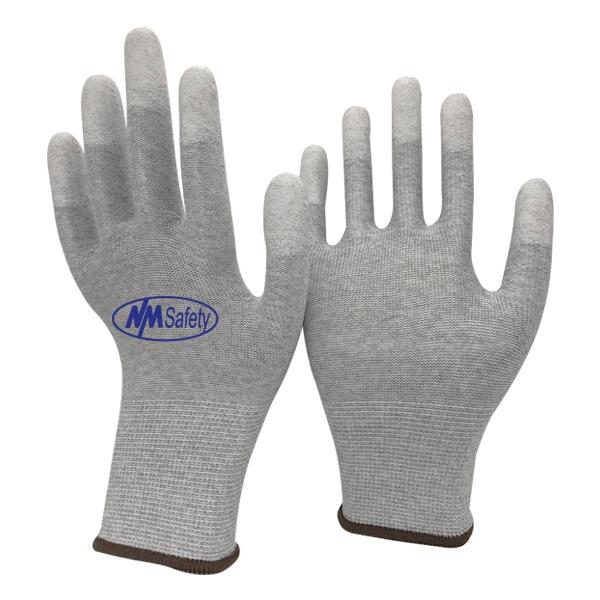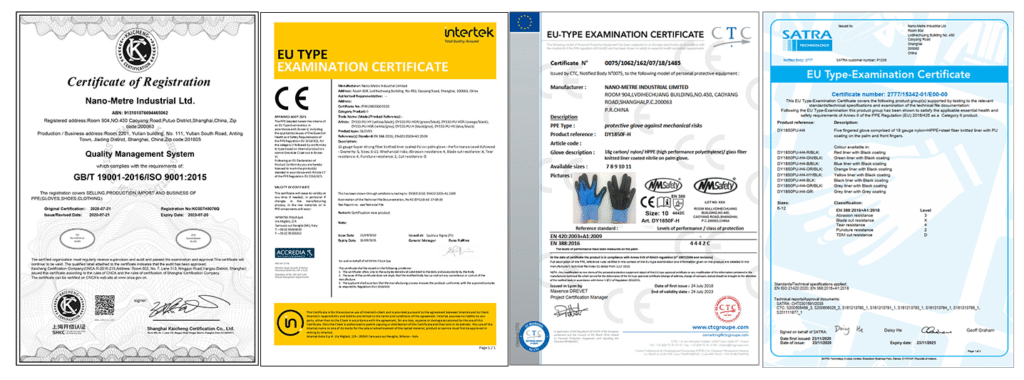Subscribe for NMSafety News
ESD Gloves vs Regular Gloves: Key Differences Explained
By hqt

ESD Gloves look like ordinary workwear, but they do a very different job. In static-sensitive zones, a tiny spark can ruin a board, a sensor, or your schedule. Regular gloves protect hands. ESD Gloves protect hands and products. They guide charge away, quietly and safely. That detail matters when yields slip and defects hide in plain sight. Are they worth the switch? What changes on the line, and what stays the same? In the next sections, we break down the real gaps, show where each glove wins, and reveal the one feature most teams overlook.

ESD Gloves Vs Regular Gloves: The Real Performance Gap
From the factory floor, we see the same issue across electronics, automotive, and aerospace lines: static discharge causing silent, expensive damage. Regular gloves offer grip and abrasion resistance, but they do not control charge. ESD Gloves are engineered to dissipate electrostatic energy in a safe, predictable path, protecting sensitive circuits, coated surfaces, and instruments. That single capability changes outcomes - fewer latent failures, fewer rebuilds, and steadier yields.
In static-critical work cells, charge can accumulate as operators move, reach, and touch. A standard knit or coated glove may even worsen the situation by holding charge. Our approach is different. We integrate conductive pathways into the glove fabric so charge never becomes a threat. When operators handle PCBs, camera modules, sensors, or polished trim, ESD Gloves shield both the product and the worker. The result is smoother handoffs, cleaner audits, and a quieter defect log.
Production leaders choose ESD over regular because it stabilizes processes. You get consistent performance in inspection, SMT, rework, and packaging. You also meet customer requirements without scrambling for last-minute exceptions. In short, ESD control is not a "nice to have" - it is the hidden layer of quality assurance that protects your brand.
✅ Where ESD Gloves Win
• Charge Control: ESD Gloves continuously and safely discharge electrostatic build-up.
• Defect Reduction: Lower risk of latent, field-appearing failures.
• Process Stability: More predictable yields in precision assembly and maintenance.
Inside NMSafety's ESD PU Fingertips Coated Antistatic Gloves
NMSafety designs for real shifts and real takt times. Our ESD PU Fingertips Coated Antistatic Gloves combine dexterity, comfort, and reliable dissipation in day-to-day use. Operators can focus on the job rather than fighting their PPE.
1) Materials And Construction
We start with a 13-gauge nylon & carbon knitted liner. The nylon gives a snug, breathable fit with flexibility for fine motions. The carbon fiber delivers proven antistatic performance to minimize static build-up and help prevent damage to sensitive electronics. This fiber blend is durable, so the glove keeps its shape over long shifts and repeated donning.
At the fingertips, a PU (polyurethane) coating provides added grip and mechanical protection where parts are actually handled. The coating is touchscreen-compatible, so operators can use HMIs, tablets, and scanners without removing gloves. That keeps lines moving, enforces cleanroom rules, and reduces cross-contamination risks.
✅ Key Product Highlights
• 13-Gauge Nylon Liner: Strong durability with easy finger movement.
• Carbon Fiber Antistatic: Reduces static build-up and supports touchscreen use.
• PU Fingertip Coating: Extra grip, precision handling, and abrasion resistance.
• Touch Screen Gloves: Suitable for most touchscreen devices at the station.
• Industry Fit: Aerospace, automobile, electronics, maintenance, and manufacturing.
• Charge Safety: ESD Gloves help protect both wearer and product by continuously discharging static.
2) Practical Advantages On The Line
Teams report steadier pick-and-place, fewer slips on tiny fasteners, and cleaner handoffs to test. Supervisors appreciate keeping gloves on during scans and digital sign-offs. Procurement sees value because the 13-gauge build extends service life while the PU fingertips maintain grip over time. This is a balanced solution: tactile feel for small parts, robust enough for everyday use, and compliant with static-sensitive workflows.

Selection, Customization, And Rollout With NMSafety
Deciding between ESD Gloves and regular gloves comes down to risk. If your operators touch bare PCBs, sensors, camera assemblies, battery tabs, or painted finishes, non-ESD options create hidden cost. In a test bay filled with precision instrumentation, charge control is insurance for your product and your timeline.
NMSafety supports program-level adoption with flexible branding and supply planning:
• MOQ: 12,000 pairs
• Lead Time: 60-120 days
• Customization: Logo, color, and packing to match your cleanroom standards or corporate identity
We go beyond a datasheet. Our team helps you size your fleet, define replacement cycles, and integrate ESD Gloves into existing ESD controls - wrist straps, mats, and grounded benches. We also advise on storage and rotation so materials keep their properties through seasonal humidity changes and shift patterns.
✅ Implementation Tips For A Clean Rollout
• Define where ESD Gloves are mandatory: SMT, assembly, inspection, rework, and packaging.
• Pair gloves with grounded workstations, ESD flooring, and routine tester checks.
• Track defect, NFF (no fault found), and rework rates before/after to quantify ROI.
• Stock multiple sizes at entry points to static-controlled areas and post clear signage.
❓ Why This Choice Pays Off
Swapping regular gloves for ESD Gloves is more than compliance. It is a quality strategy that protects customer trust. You reduce invisible risks and improve operator confidence. You also simplify audits because ESD control becomes a visible, standardized practice. Over time, the benefit shows up in fewer surprise returns, a calmer MRB board, and a smoother route from line to loading dock.
Call-To-Action
Ready to harden your static-sensitive stations? Contact NMSafety to request samples of our ESD PU Fingertips Coated Antistatic Gloves, discuss logo and packing customization, or plan a phased rollout. Let's build a safer, more reliable production flow - one workcell at a time.
